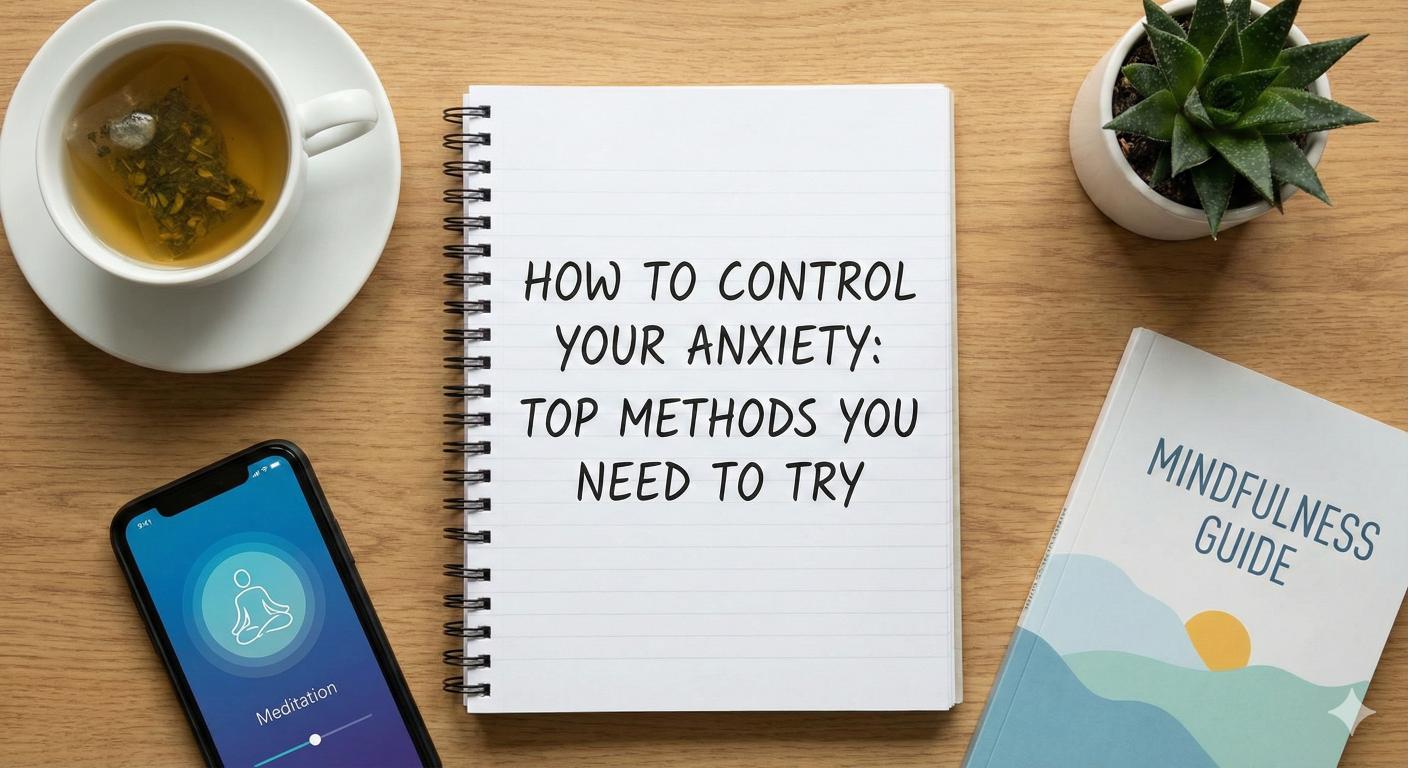Postpartum Depression: More Than The Baby Blues
Discover postpartum depression: more than the baby blues—symptoms, treatments, and long-term effects explained.


Understanding Postpartum Depression
Differentiating Baby Blues from PPD
Postpartum depression (PPD) is often confused with the more common "baby blues," but there are key differences between the two. Baby blues typically affect approximately 75% of new mothers, presenting with mild mood swings, crying spells, anxiety, and difficulty sleeping. These symptoms generally begin within the first 2 to 3 days after childbirth and may last for up to two weeks [1].
In contrast, PPD is a more serious condition characterized by intense and prolonged symptoms. About 1 in 7 new parents experience PPD, which can include emotional highs and lows, frequent crying, irritability, fatigue, feelings of guilt, anxiety, and difficulty caring for the baby or oneself. Symptoms of PPD usually develop within the first few weeks after giving birth but can start earlier, during pregnancy, or even up to a year postpartum [2].
To summarize the differences, the following table outlines the key distinctions:
AspectBaby BluesPostpartum Depression (PPD)PrevalenceAffects ~75% of new mothersAffects ~15% of new parentsOnset2-3 days postpartumWithin weeks after birth or during pregnancy, can last up to a yearDurationUp to 2 weeksLonger than 2 weeksSymptomsMild mood swings, anxiety, cryingIntense mood swings, guilt, anxiety, difficulty caring for self/baby
Prevalence and Onset of PPD
The prevalence of postpartum depression is significant, as it affects about 15% of new parents, which translates to approximately 1 in 7 [2]. Additionally, while many new parents might experience baby blues, there is a risk that these feelings can escalate into PPD.
The onset of PPD varies among individuals. Symptoms may emerge during pregnancy or shortly after childbirth, although they can also appear later, even up to a year following delivery. Approximately 1 in 1,000 new parents may develop postpartum psychosis, a severe condition requiring immediate treatment [2].
Understanding these elements of postpartum depression — how it differs from baby blues, its prevalence, and its various onset patterns — is essential for recognizing and addressing this mental health condition in new parents. For more information on various types of depressive disorders, refer to our article on types of depressive disorders explained.

Symptoms and Impact of PPD
Postpartum depression (PPD) manifests through various emotional and behavioral signs, significantly affecting both mothers and their infants. Understanding these symptoms and their implications is essential for timely intervention and support.
Emotional and Behavioral Signs
Postpartum depression presents with a range of emotional and behavioral symptoms. Key indicators include:
These symptoms are akin to those of classical depression. People with PPD may experience persistent sadness, low self-esteem, changes in sleeping and eating patterns, and feelings of hopelessness or worthlessness [3].
Consequences for Mothers and Infants
The impact of postpartum depression extends beyond the individual mother, affecting her infant and the broader family system. Some notable consequences include:
Impact AreaConsequencesMaternal HealthUntreated PPD can lead to increased risks of smoking, alcohol or drug abuse, and suicidal ideation. Maternal physical and psychological health may deteriorate.Infant DevelopmentInfants may experience disruptions in physical health, sleep patterns, and development across various domains including cognitive, emotional, social, and behavioral.Mother-Child BondingDifficulties in forming a healthy attachment can affect breastfeeding, maternal role fulfillment, and overall mother-child interactions.
The adverse effects of postpartum depression can lead to lasting impacts on both maternal and infant health. Mothers struggling with PPD are more likely to encounter difficulties in establishing a nurturing, supportive relationship with their infants, which is critical for early development and bonding [4].
Recognizing the symptoms of postpartum depression is vital for both the health of the mother and the child. Early detection and treatment offer the best path to recovery and positive outcomes for both parties.

Risk Factors for Postpartum Depression
Postpartum depression (PPD) is influenced by various risk factors that can significantly impact a mother's mental health after childbirth. These factors can be categorized into three main groups: sociodemographic, physical and biological, and psychological and social.
Sociodemographic Factors
Sociodemographic factors play a crucial role in the risk of developing postpartum depression. Factors such as the mother's age, relationship status, and socioeconomic status can affect the likelihood of experiencing PPD. Evidence shows that women with lower socioeconomic backgrounds and those lacking adequate social support are at a heightened risk.
FactorDescriptionMother's AgeYounger mothers may experience higher rates of PPD.Relationship StatusSingle or unsupported mothers face more challenges.Socioeconomic StatusLower socioeconomic status correlates with increased risk.
Additionally, stressful life events, such as domestic violence, can also contribute to the incidence of postpartum depression. According to research, individuals experiencing high levels of social support are less likely to develop PPD [5].
Physical and Biological Factors
Physical and biological factors can also impact the development of postpartum depression. Hormonal changes after childbirth are significant contributors. A positive history of depression, postpartum complications, and childbirth complications also influence the risk of developing PPD.
FactorDescriptionHormonal ChangesFluctuations in hormones after delivery are linked to PPD.History of DepressionA prior history of depression increases risk.Childbirth ComplicationsComplications during delivery can exacerbate mental health issues.
Additionally, conditions like gestational diabetes, obesity, low hemoglobin concentration post-delivery, and vitamin D insufficiency have been associated with an increased occurrence of depressive symptoms [4].
Psychological and Social Factors
Psychological and social factors play a vital role in postpartum mental health outcomes. Women with a history of depression or psychiatric illness, as well as those experiencing depressive symptoms during pregnancy, are at increased risk for PPD. Lack of spousal support and inadequate social networks can further exacerbate these challenges.
FactorDescriptionHistory of Psychiatric IllnessPrevious mental health issues increase vulnerability.Lack of Social SupportInsufficient support from family and friends is detrimental.Stressful Life EventsHigh stress during and after pregnancy raises risks.
Genetic and epigenetic markers, cultural factors, and the impact of birth experiences (like cesarean deliveries or multiple births) have also been identified as potential areas for further investigation [4]. Understanding these risk factors can help in early intervention and support for mothers experiencing postpartum depression: more than the baby blues. For more insights on different types of depression, visit types of depressive disorders explained.

Treatment Options for PPD
Addressing postpartum depression (PPD) requires a comprehensive approach tailored to an individual's needs. Several effective treatment options exist, including psychotherapy, antidepressant medications, and specialized treatments like Brexanolone.
Psychotherapy and Counseling
Psychotherapy, commonly referred to as talk therapy, plays a significant role in the treatment of PPD. It provides a supportive environment where new mothers can explore their feelings and concerns. Different forms of therapy can be beneficial, including cognitive behavioral therapy (CBT), interpersonal therapy (IPT), and support groups.
Research indicates that psychotherapy can effectively reduce the symptoms of postpartum depression. Treatment can begin as soon as symptoms appear, which may be within a week of delivery or up to a year later [2]. Continuous sessions allow mothers to develop coping strategies and receive emotional support during this challenging time.
Antidepressant Medications
For some individuals, antidepressant medications may be necessary to help manage PPD. Certain types of antidepressants have been found to be safe for breastfeeding mothers, minimizing risks to the infant.
The selection of the appropriate medication should be informed by healthcare providers who can assess unique factors such as the severity of symptoms and any potential interactions with breastfeeding. Treatment with antidepressants can have significant effects in alleviating debilitating symptoms, enabling mothers to bond better with their infants and engage in daily activities [6].
Specialized Treatments like Brexanolone
Brexanolone, also known as Zulresso, is a groundbreaking treatment approved by the U.S. FDA specifically for postpartum depression in adult women. It works by slowing the rapid drop of certain hormones that might trigger postpartum depression after childbirth. Brexanolone is administered through an intravenous (IV) infusion over a period of 60 hours and requires monitoring in a healthcare facility due to potential serious side effects [7].
This specialized treatment represents an important advancement in addressing PPD. Studies indicate that it can lead to rapid improvements in mood and functioning, significantly impacting the quality of life for mothers suffering from depression.
Considering the various treatment options is crucial for effectively addressing postpartum depression: understanding clinical depression: more than just feeling sad provides broader insights into depressive disorders, while information on major depressive disorder: symptoms causes and treatment can shed light on other related conditions. Engaging in a multidisciplinary approach is often key in ensuring the well-being of both mother and infant.
Long-term Effects and Prevention
Chronic Depression and Relapses
Postpartum depression (PPD) can improve with the right treatment. However, in some instances, it may lead to chronic depression, lasting long after the initial symptoms have appeared. Research indicates that approximately 25% of patients with perinatal depression will experience symptoms for up to 3 years after giving birth NCBI Bookshelf. Untreated or inadequately treated PPD can lead to long-term issues that not only affect the mother but also the entire family. The ramifications may include psychological health impacts, strained relationships, and increased risks of suicidal ideation.
Duration of SymptomsPercentage3 Years or More25%
Importance of Continuous Treatment
Continuous treatment even after initial improvement is essential to prevent potential relapses. Maintaining appropriate therapeutic interventions helps mitigate risks associated with chronic depression. The implications of untreated postpartum depression extend beyond the mother, affecting the fetus, partner, and family dynamics. Left untreated, PPD may lead to difficulties in mother-child bonding, negatively influencing interactions and emotional development in children Mayo Clinic.
Preventive Measures and Postpartum Care
Effective preventive measures and postpartum care are crucial in managing PPD. Comprehensive care approaches may include regular mental health screenings, education about PPD for expecting and new mothers, and providing resources for support. Physical and psychological health should be monitored closely to ensure timely intervention if symptoms arise. Awareness of risk factors can aid healthcare providers and families in recognizing early signs and implementing preventative strategies to reduce the impact of postpartum depression on maternal and infant health.
The importance of addressing postpartum depression holistically cannot be understated. This includes understanding the effects on maternal well-being as well as on children's cognitive and emotional development. Appropriate treatment, intervention, and postpartum care strategies can contribute significantly to a healthy mother-child dynamic. To learn more about various depressive disorders, explore our articles on understanding clinical depression: more than just feeling sad, types of depressive disorders explained, and other related topics.
Global Perspectives on Postpartum Depression
Understanding the nuances of postpartum depression (PPD) on a global level is crucial for raising awareness and improving treatment strategies. This section examines the prevalence rates of PPD worldwide, highlights cross-cultural variations, and underscores the necessity for ongoing awareness and research in this field.
Worldwide Prevalence Rates
Postpartum depression affects a significant portion of women across different countries. Research indicates that the worldwide prevalence of PPD ranges from 10% to 15% among new mothers, although some studies suggest the rates can be as high as 20% in certain regions [4]. Below is a table summarizing approximate global prevalence rates:
RegionPrevalence Rate (%)North America11-17Europe10-15Asia10-20Africa12-25South America10-20
Cross-cultural Variations
Cultural factors significantly influence the experience and reporting of postpartum depression. Societal norms, stigma, and differing levels of mental health support vary greatly across countries, affecting both the prevalence and treatment of PPD. For instance, in some cultures, the stigma surrounding mental health may prevent women from seeking help or even acknowledging their symptoms. Conversely, regions with robust mental health resources report higher screening and diagnosis rates, which may inflate prevalence statistics.
An example of these disparities can be observed in Asian cultures, where collectivist values emphasize family and community support. These values may lead to lower reported rates of PPD, as the emotional burden is often shared within the family unit. In contrast, Western cultures tend to encourage individualism, which might increase the awareness and acknowledgement of postpartum mental health issues.
Need for Awareness and Research
The need for awareness and further research into postpartum depression is paramount. Many women suffering from PPD remain undiagnosed and untreated due to a lack of knowledge about the condition, insufficient screening protocols, and cultural stigmas that discourage open discussions about mental health.
Increasing awareness can lead to better training for healthcare providers to recognize and treat PPD early. Engagement in research will contribute to a deeper understanding of PPD and its long-term effects, ultimately helping to develop more effective prevention and treatment strategies. Global collaboration on mental health initiatives is essential to convey the message that postpartum depression is not merely "baby blues," but a serious condition that requires attention and care.
For additional insights into related depressive disorders, consider exploring topics such as understanding clinical depression: more than just feeling sad and the different types of depressive disorders explained.
References
[2]:
[3]:
[4]:
[5]:
[6]:
[7]:
More Resources
A team ready to start your journey.
Get in touch — today.
We are a safe space – a haven for exceptional individuals to receive discreet, personalized, in-person treatment and care.
.avif)










